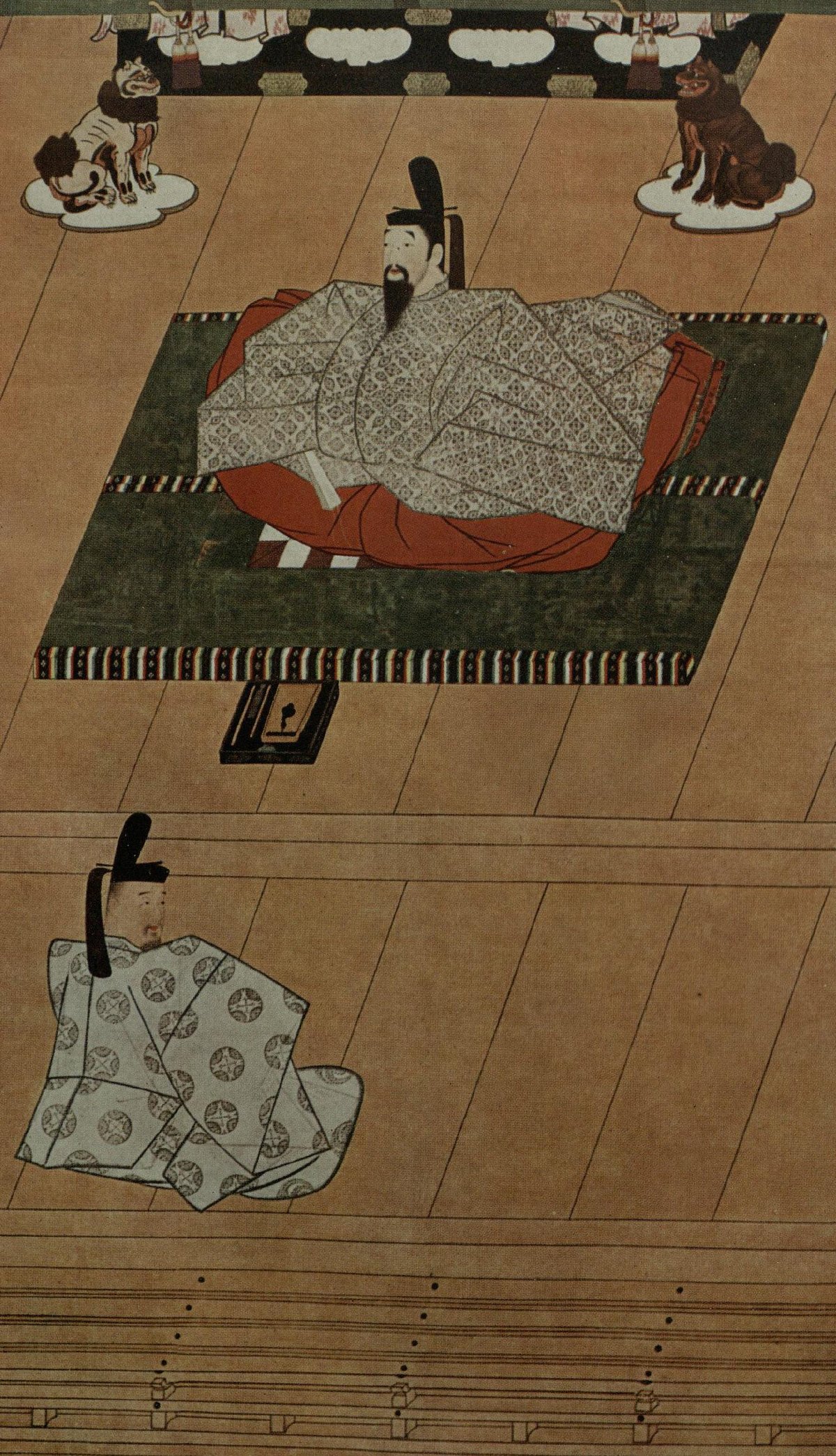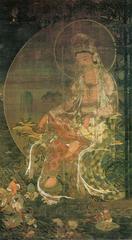
Daitoku-ji Kyoto: Comprehensive Visitor Guide to Hours, Tickets & Historic Zen Heritage
Date: 14/06/2025
Introduction
Daitoku-ji (大徳寺), nestled in the tranquil northern reaches of Kyoto, stands among Japan’s most esteemed Zen Buddhist temples. Renowned for its centuries-old history, sublime Zen gardens, and pivotal role in the evolution of the Japanese tea ceremony, Daitoku-ji is both a spiritual sanctuary and a living museum of Japanese culture. This guide provides a detailed overview of Daitoku-ji’s historical and cultural significance, architectural highlights, visiting hours, ticketing details, accessibility, transportation options, and practical travel tips—ensuring you make the most of your journey to one of Kyoto’s most revered historical sites (Discover Kyoto, Traditional Kyoto, Kyoto Travel).
Table of Contents
- Historical Overview
- Influence on Japanese Culture
- Sub-Temples: Microcosms of Zen
- Practical Visitor Information
- Living Spirituality & Contemporary Practice
- Symbolism & Zen Design
- Daitoku-ji’s Political & Cultural Role
- Enduring Legacy & Modern Relevance
- FAQs
- Visual Content & Media Suggestions
- Internal Links
- Call to Action
- Sources
1. Historical Overview
Founding and Early Development
Daitoku-ji was founded in 1315 by the monk Shūhō Myōchō (Daitō Kokushi), initially as a small Zen monastery. Its formal establishment as an imperial supplication hall came in 1326, elevating it within the Rinzai Zen tradition. The temple quickly gained prominence, achieving high status among Zen institutions, yet later chose independence from the state-sanctioned hierarchy, asserting a unique spiritual and cultural identity (Discover Kyoto).
Destruction and Revival: The Ōnin War
The Ōnin War (1467–1477) devastated Kyoto, and Daitoku-ji suffered extensive destruction. Its restoration, led by the charismatic monk Ikkyū Sōjun with vital support from wealthy Sakai merchants, exemplified the Zen concept of impermanence and renewal. This era of reconstruction revitalized both the temple’s physical presence and its cultural influence (Traditional Kyoto).
Architectural Layout and Sub-Temples
Daitoku-ji sprawls across 23 hectares, enclosed by walls and divided into over 20 sub-temples (tatchū). The main axis—with the Sanmon (main gate), Butsuden (Buddha Hall), and Hattō (Lecture Hall)—follows classical Zen monastic design, though these halls are usually closed to the public. The sub-temples, commissioned by feudal lords and Zen masters, each present unique gardens, tea rooms, and spiritual histories. A handful, such as Daisen-in, Ryōgen-in, Zuihō-in, and Kōtō-in, are regularly open for visitors (Rough Guides).
Daitoku-ji and the Japanese Tea Ceremony
Daitoku-ji’s influence on the Japanese tea ceremony is profound. In the 16th century, it became a center for the wabi-cha style, championed by Sen no Rikyū. Patronage from political leaders like Toyotomi Hideyoshi—who selected Daitoku-ji as Oda Nobunaga’s burial site—further elevated its status. Rikyū’s involvement in the Sanmon gate’s renovation led to dramatic historical events, including his forced suicide, cementing Daitoku-ji’s role as a site where political power, art, and spirituality intersected (Discover Kyoto).
Zen Gardens and Artistic Heritage
Daitoku-ji is revered for its Zen gardens (karesansui). Notably:
- Daisen-in: A National Treasure, featuring a metaphorical river of life in its rock garden (Discover Kyoto).
- Ryōgen-in: Boasts Japan’s smallest Zen garden, Tōtekiko, and several others representing key Zen concepts (Rough Guides).
- Zuihō-in: Gardens designed by Mirei Shigemori, with subtle Christian symbolism reflecting its founder’s faith (JP Connection).
These gardens are not only visual masterpieces but also serve as tools for meditation and contemplation, embodying Zen aesthetics of simplicity and impermanence.
Patronage, Burial, and the Warrior Class
As Zen Buddhism gained favor among the samurai, Daitoku-ji became a prestigious site for burial and patronage. Many sub-temples house the graves of significant historical figures, such as Oda Nobunaga at Sōken-in (not regularly open), symbolizing the temple’s enduring political and cultural relevance (Traditional Kyoto).
2. Influence on Japanese Culture and the Arts
Daitoku-ji’s legacy extends beyond religion into art, architecture, and the broader aesthetic principles of Japan. Its sub-temples are repositories of cultural treasures—fusuma paintings, tea utensils, and iconic gardens—that have shaped the wabi-sabi ideals so central to Japanese art and daily life. The temple’s architectural innovations, such as the tokonoma alcove, continue to influence modern Japanese interiors (Trundle Japan).
3. The Sub-Temples: Microcosms of Zen Philosophy
Each sub-temple offers a distinct expression of Zen thought:
- Daisen-in: Intricate rock gardens symbolizing the journey of life (JP Connection).
- Ryōgen-in: Four unique gardens, including Tōtekiko, with deep symbolic meaning (Tips for Kyoto Travel).
- Kōtō-in: Famous for tranquil moss gardens and maple trees, especially stunning in autumn.
- Zuihō-in: Notable for its Christian-inspired stone arrangements and bold garden designs.
Other sub-temples—such as Sōken-in, Jukō-in, and Shinju-an—open seasonally or for special events, each contributing to Daitoku-ji’s spiritual mosaic (visitinsidejapan.com).
4. Practical Visitor Information
Visiting Hours
- Main Grounds: Open 24 hours, free of charge.
- Sub-Temples: Typically open 9:00–16:30 or 17:00 (last entry varies by temple). Check official sources for seasonal or event-related changes (Kyoto Travel).
Tickets and Admission Fees
- Entry to Grounds: Free.
- Sub-Temple Admission: 350–600 yen per temple. No combined ticket; pay individually at each entrance.
- Special Events: Some sub-temples open only during spring/autumn or for special exhibitions.
Accessibility
- Grounds are mostly flat and walkable.
- Some sub-temples have steps or gravel paths; wheelchair access is limited.
- No on-site luggage storage; use lockers at nearby stations if needed.
Getting There
- From Kyoto Station: Karasuma Subway Line to Kitaoji Station, then city bus to Daitoku-ji-mae. Direct city bus 206 also available.
- From Kinkaku-ji: Bus 12 or 204; or a scenic 20-minute walk.
- By Taxi or Bicycle: Both are convenient options in Kyoto.
Facilities
- Restrooms available near the entrance.
- No on-site restaurants; traditional eateries nearby.
- Information booth with free maps and updates on open sub-temples.
- No free public Wi-Fi; consider renting a pocket Wi-Fi.
Etiquette and Photography
- Remove shoes before entering temple buildings.
- Maintain quiet and respectful behavior; hats and sunglasses off indoors.
- Photography is permitted in gardens but generally restricted inside buildings.
- Smoking is prohibited throughout the complex.
5. Living Spirituality and Contemporary Practice
Daitoku-ji remains an active monastic community, where visitors may observe monks engaged in daily rituals and meditation. Some sub-temples offer zazen (Zen meditation) sessions and tea ceremony experiences by reservation, providing a unique opportunity for direct engagement with living Zen practice (Medium).
6. Symbolism and Zen Philosophy in Design
The temple’s gardens and architecture are rich with Zen symbolism—dry landscape gardens evoke natural forms, and the act of their maintenance is itself meditative. Architectural elements such as the Hojo and Karamon Gate reflect principles of impermanence, simplicity, and harmony with nature (JP Connection).
7. Daitoku-ji as a Cultural and Political Stage
Throughout history, Daitoku-ji has been a backdrop for political alliances, artistic innovation, and religious developments. Its association with powerful figures like Sen no Rikyū and Toyotomi Hideyoshi underscores its significance as both a spiritual and cultural center (JP Connection).
8. Enduring Legacy and Modern Relevance
Today, Daitoku-ji embodies the living heritage of Japanese Zen, continuing to influence aesthetics, philosophy, and everyday practice. Its tranquil environs and ongoing religious activities offer both pilgrims and tourists a meaningful encounter with Japan’s spiritual traditions (Medium).
9. Frequently Asked Questions (FAQs)
Q: What are Daitoku-ji’s visiting hours?
A: The main grounds are always open. Sub-temples are typically open 9:00–16:30 or 17:00; check ahead for specifics.
Q: How much do tickets cost?
A: Entry to the grounds is free. Sub-temple admission ranges from 350 to 600 yen per temple.
Q: Are guided tours or meditation experiences available?
A: Yes, some sub-temples offer guided tours and Zen meditation sessions by reservation.
Q: Is Daitoku-ji wheelchair accessible?
A: The main paths are relatively flat; however, some sub-temples have limited accessibility due to steps or gravel.
Q: Can I take photos?
A: Photography is permitted in gardens but generally prohibited inside temple interiors.
10. Visual Content and Media Suggestions
- Use high-resolution images of Daitoku-ji’s Zen gardens, the Sanmon gate, and interiors, with SEO-optimized alt text (e.g., “Daitoku-ji Zen garden in autumn”).
- Embed virtual tours or videos of zazen sessions and tea ceremonies if available.
11. Internal Links
12. Call to Action
For the latest updates on opening hours, guided experiences, and seasonal events, download the Audiala app or follow us on social media. Use our Kyoto travel resources for insider tips and real-time information to enhance your journey.
Summary and Recommendations
Daitoku-ji offers a profound immersion into Japan’s Zen Buddhist heritage, artistic tradition, and spiritual practice. Its array of sub-temples, each with distinctive gardens and histories, invites visitors to experience the depth of Zen philosophy and culture. With careful planning—taking into account varying visiting hours, ticketing, and accessibility—your visit can be both enlightening and memorable. Explore nearby landmarks like Kinkaku-ji and Ryoan-ji to enrich your exploration of Kyoto’s historic landscape. For up-to-date information, trusted travel apps and official tourism platforms are highly recommended. Daitoku-ji remains a testament to the enduring spirit of Japanese Zen and is a highlight for any Kyoto itinerary (JP Connection, Rough Guides, Inside Kyoto).
Sources and Further Reading
- Daitoku-ji: Visiting Hours, Tickets, and Guide to Kyoto’s Historic Zen Temple (Discover Kyoto)
- Visiting Daitoku-ji: Hours, Tickets, and Exploring Kyoto’s Historic Zen Temple (JP Connection)
- Daitoku-ji Visiting Hours, Tickets, and Key Attractions in Kyoto’s Historic Zen Temple Complex (visitinsidejapan.com)
- Practical Visitor Information (Kanpai Japan) (Kyoto Travel)
- Daitoku-ji and Zen Gardens (Rough Guides)
- Traditional Kyoto (Traditional Kyoto)
- Living Spirituality and Contemporary Practice (Medium)
- Inside Kyoto (Inside Kyoto)















































































